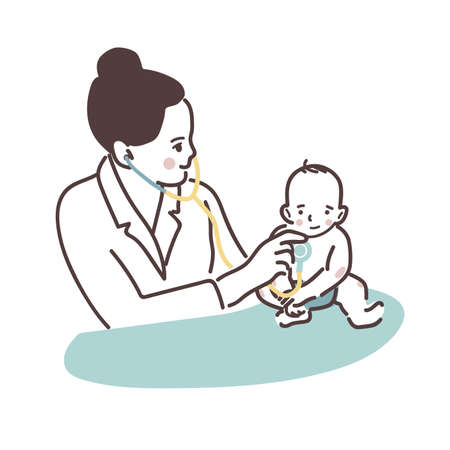1. Understanding the Importance of Early University Savings
As university tuition fees and living costs in the UK continue to rise, starting to save early for your child’s higher education has never been more important. Many parents are taken aback by the substantial expenses associated with university life, which now go far beyond just course fees. By beginning a savings plan sooner rather than later, you can better prepare for these financial demands and potentially reduce your childs reliance on student loans.
The Rising Cost of University in the UK
University tuition fees in England can reach up to £9,250 per year for undergraduate courses. When you add accommodation, food, books, travel, and other essentials, the overall cost quickly adds up. The table below provides a snapshot of average annual costs faced by students:
| Expense Type | Average Annual Cost (2024) |
|---|---|
| Tuition Fees | £9,250 |
| Accommodation | £6,000–£8,000 |
| Living Expenses (food, bills, etc.) | £4,000–£5,500 |
| Books & Study Materials | £300–£600 |
| Total Estimated Annual Cost | £19,550–£23,350 |
The Value of Starting Early
Even small regular contributions made over several years can grow significantly thanks to compound interest. With university costs increasing each year, establishing a savings habit early gives your money time to work harder for you and helps ensure your child has the resources they need when the time comes. Ultimately, early planning offers both peace of mind and greater financial security for your family’s future.
2. What is a Junior ISA?
A Junior Individual Savings Account (Junior ISA or JISA) is a tax-efficient savings account designed specifically for children living in the UK. It allows parents, guardians, and even family friends to save money on behalf of a child under the age of 18, with the aim of building a nest egg for important future milestones such as university education. Unlike some other savings accounts, Junior ISAs are locked until the child turns 18, ensuring that funds are preserved for when they are most needed.
Key Features of Junior ISAs
| Feature | Description |
|---|---|
| Eligibility | Available to children under 18 who live in the UK and do not already have a Child Trust Fund (CTF). |
| Account Types | Cash Junior ISA (like a regular savings account) or Stocks & Shares Junior ISA (invests in the stock market). |
| Annual Allowance | Up to £9,000 per tax year (2024/25 limit), which can be split between both types. |
| Tax Benefits | No income tax or capital gains tax on interest or investment growth within the account. |
Benefits of Junior ISAs
- Tax-Free Growth: All interest earned or investment gains are completely free from UK tax, helping your child’s savings grow faster.
- Locked-In Savings: Funds cannot be withdrawn until your child’s 18th birthday (except in exceptional circumstances like terminal illness), which encourages long-term planning and financial discipline.
- No Impact on Parental Savings Allowances: Money paid into a Junior ISA does not affect your own annual ISA allowance.
UK-Specific Details
The UK government does not contribute directly to Junior ISAs, but anyone can pay into the account – from parents to grandparents and family friends – making it ideal for birthday or Christmas gifts. On reaching 16, your child can manage their Junior ISA but cannot access the funds until they turn 18. At 18, the account automatically converts into an adult ISA and becomes fully accessible by your child, providing them with a valuable financial foundation as they embark on university or other adult pursuits.

3. What is a Child Trust Fund?
Child Trust Funds (CTFs) were introduced by the UK government in 2005 as a long-term, tax-free savings account for children born between 1 September 2002 and 2 January 2011. The aim was to encourage parents and guardians to save for their child’s future, including higher education costs. Understanding how CTFs work and who can benefit from them is crucial when considering your options for university savings.
How Child Trust Funds Work
A Child Trust Fund is opened automatically for eligible children, with an initial government contribution—usually £250 or £500 for lower-income families. Parents, family members, and friends can make additional contributions up to a yearly limit. The funds in the account cannot be accessed until the child turns 18, at which point the money belongs solely to them.
| Feature | Details |
|---|---|
| Eligibility | Children born in the UK between 1 Sept 2002 – 2 Jan 2011 |
| Initial Government Payment | £250 (£500 for low-income families) |
| Annual Contribution Limit (2024/25) | £9,000 |
| Tax Status | Interest and gains are tax-free |
| Access Age | 18 years old |
| Account Types | Cash CTF or Stocks & Shares CTF |
| Status of New Accounts | No new CTFs since 2011; existing accounts remain active |
Unique Characteristics for UK Savers
The main advantage of a Child Trust Fund is its government-backed nature and tax-free growth. Unlike other savings vehicles, the account is locked until age 18, which safeguards the funds for significant life events like university. Importantly, if you have an existing CTF, you can transfer it to a Junior ISA if you prefer that structure.
Relevant Government Policies
The government no longer issues new Child Trust Funds; instead, Junior ISAs have replaced them for children born after January 2011. However, support remains in place for managing or transferring existing CTFs, and many providers offer online tools to help you locate lost accounts. When planning for university savings, understanding whether your child has a CTF—and what your options are—remains a critical step.
4. Comparing Junior ISAs and Child Trust Funds
When deciding how best to save for your child’s university education, understanding the key differences between Junior Individual Savings Accounts (Junior ISAs) and Child Trust Funds (CTFs) is crucial. Below, we directly compare these two schemes on accessibility, potential returns, limitations, and suitability for different family situations.
| Junior ISA | Child Trust Fund (CTF) | |
|---|---|---|
| Accessibility | Available to all children under 18 living in the UK who do not already have a CTF. Parents, guardians, friends, and family can contribute. Funds are locked until age 18. | Only available to children born between 1 September 2002 and 2 January 2011. No new accounts can be opened, but existing ones can continue to receive contributions. Access at age 18. |
| Returns | Offers both cash and stocks & shares options—potential for higher returns with investment choices but subject to market risk. Tax-free growth on savings. | Similar structure with cash or investment options; however, many older CTFs may offer less competitive interest rates compared to modern Junior ISAs. |
| Limitations | Annual contribution limit (£9,000 for tax year 2023/24). Cannot be accessed before the child turns 18 except in special circumstances (e.g., terminal illness). | Same annual contribution limit as Junior ISAs. Some providers may charge higher fees or offer fewer investment choices due to the products age. |
| Suitability for Families | Ideal for families seeking flexible saving options with better rates and greater provider choice. Can transfer CTFs into a Junior ISA for more benefits. | Suitable only for those who already have an account; consider transferring to a Junior ISA if you want more modern features or better rates. |
Which Is Right For Your Family?
If your child has a CTF:
You can continue using it or transfer the funds into a Junior ISA for potentially better returns and a wider range of investment options.
If your child does not have a CTF:
A Junior ISA is the only option available and offers straightforward tax-free savings with flexibility in choosing cash or stocks & shares accounts.
Practical Tip:
If youre looking for simplicity and control, a cash Junior ISA is often the safest route. If you’re comfortable with some risk and want higher potential growth, consider a stocks & shares Junior ISA—but always assess your familys financial situation first.
5. Practical Steps to Start Saving
Step-by-Step Guide for UK Parents
Starting to save for your child’s university education may seem daunting, but with the right approach and understanding of available accounts like Junior ISAs and Child Trust Funds (CTFs), you can build a secure financial foundation. Here’s how to get started safely and effectively:
Step 1: Choose the Right Account
| Feature | Junior ISA | Child Trust Fund |
|---|---|---|
| Eligibility | Children under 18, UK resident, not holding a CTF | Children born between 1 Sept 2002 and 2 Jan 2011 |
| Annual Contribution Limit (2024/25) | £9,000 | £9,000 |
| Account Types | Cash or Stocks & Shares | Cash or Stocks & Shares |
| Access Age | 18 years old | 18 years old |
| Transferable? | Yes (between providers and from CTFs) | Yes (to Junior ISA only) |
Step 2: Opening an Account Safely
- Select a reputable provider: Use well-known banks or building societies regulated by the Financial Conduct Authority (FCA). Compare interest rates, investment options, and fees.
- Gather required documents: You’ll need proof of identity for both you and your child (passport or birth certificate) and proof of address.
- Apply online or in-branch: Most providers offer straightforward online applications. For CTF transfers, contact your chosen Junior ISA provider for their transfer process.
- Set up parental responsibility: Only someone with parental responsibility can open these accounts.
Step 3: Contributing Regularly and Securely
- Create a monthly savings plan: Set up a standing order to automate contributions. Consistency helps grow the fund over time.
- Encourage family contributions: Relatives can also contribute up to the annual limit—perfect for birthdays and special occasions.
- Avoid scams: Never share account details in response to unsolicited calls or emails. Always log in via official bank websites.
Step 4: Managing the Account Effectively
- Review performance annually: If you’ve chosen a Stocks & Shares Junior ISA/CTF, check growth against benchmarks and consider adjusting investments if needed.
- Keep details up-to-date: Update address/contact information to ensure you receive statements and important notifications.
- Consider transferring accounts: If you find better rates or services elsewhere, transfer your child’s account safely using official transfer processes—never withdraw funds directly before age 18.
- No early withdrawals: Remember, funds are locked until your child turns 18 to protect their future savings.
Your Next Safe Step Forward
The earlier you begin, the more time your child’s savings have to grow. By following these steps and regularly reviewing your approach, you’ll be setting up your child for a financially secure start at university while ensuring their funds remain protected throughout their childhood.
6. Maximising University Savings: Tips and Considerations
Once you have chosen between a Junior ISA and a Child Trust Fund for your child’s university savings, the next step is to ensure you are making the most out of these accounts. Here are some practical tips and considerations tailored for UK parents looking to maximise their child’s future educational opportunities.
Make Regular Contributions
Consistent contributions, even if modest, can make a significant difference over time thanks to compound interest. Setting up a standing order from your current account ensures you never miss a monthly payment. Below is a quick comparison of potential growth with different contribution levels:
| Monthly Contribution | 10 Years Total (Assuming 4% Annual Growth) |
|---|---|
| £25 | £3,675 |
| £50 | £7,350 |
| £100 | £14,700 |
Review Your Options Annually
The financial market evolves, so it’s wise to review your savings account each year. Check if your Junior ISA or Child Trust Fund provider offers competitive interest rates or investment options. Consider transferring to another provider if better rates or funds are available—this is permitted and often straightforward in the UK.
Diversify Where Appropriate
If you’ve chosen a Stocks & Shares Junior ISA, diversify investments across sectors and regions to reduce risk. If you’re unsure how to do this safely, consult with a regulated financial adviser who understands university savings goals.
Engage Family and Friends
Encourage grandparents or relatives to contribute gifts directly into the Junior ISA or Child Trust Fund. Many providers allow third-party payments, which can boost the total pot significantly without impacting your own monthly budget.
Prepare Early for the University Application Phase
As your child approaches their 16th birthday, start planning for how savings will be accessed and used. Ensure all documentation is in order so funds can be transferred seamlessly when they turn 18. Discuss budgeting with your child and explore student finance options alongside their savings.
Summary Table: Key Actions for Maximising University Savings
| Action | Description |
|---|---|
| Set Up Standing Order | Ensures regular, automated contributions into account |
| Annual Review | Keeps savings on best possible terms and returns |
| Diversification | Lowers risk in Stocks & Shares ISAs through varied investments |
| Invite Family Contributions | Makes use of wider support network for additional deposits |
| Early Planning at Age 16+ | Smooth transition for accessing funds at 18; supports budgeting skills |
By taking these steps, UK families can give their children the best possible start as they embark on their university journey—combining sound financial planning with practical preparation.


